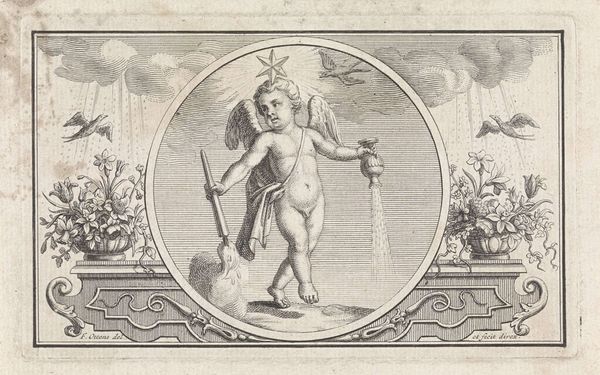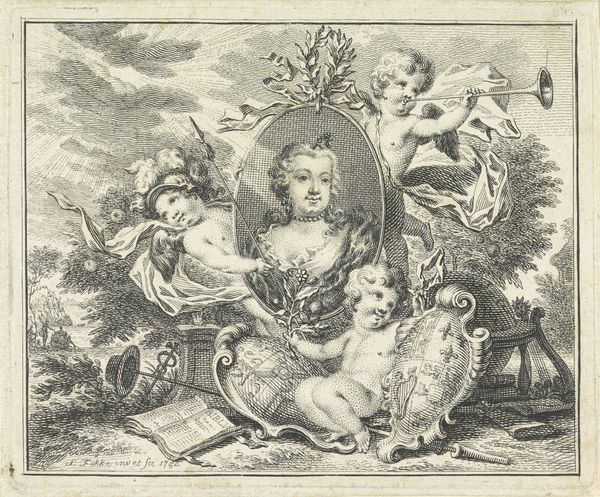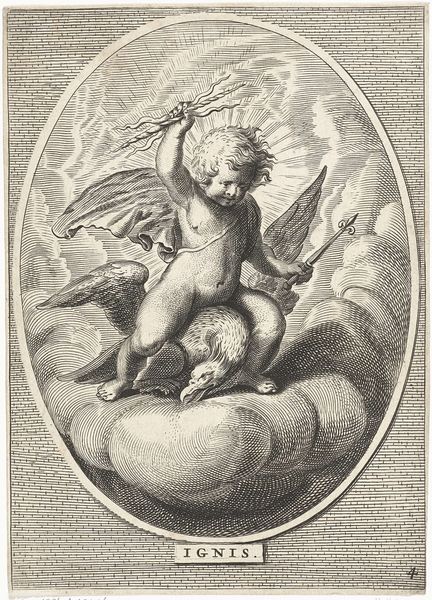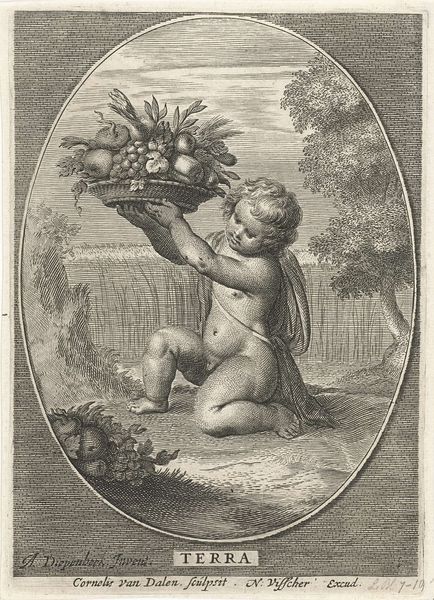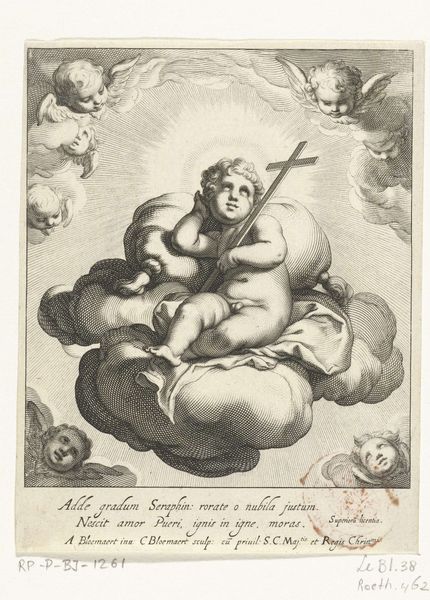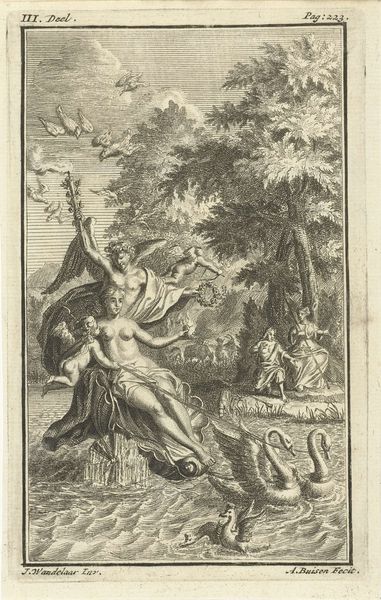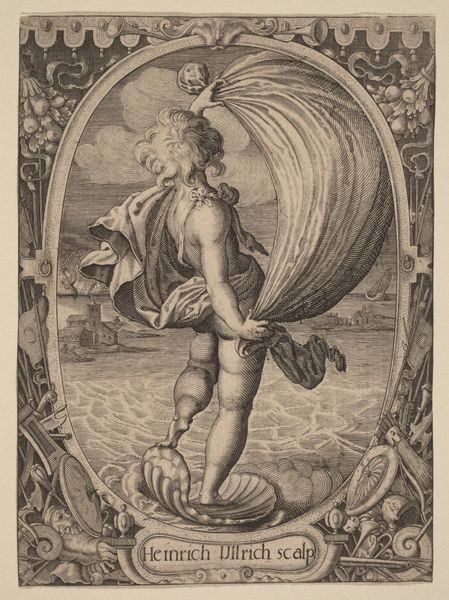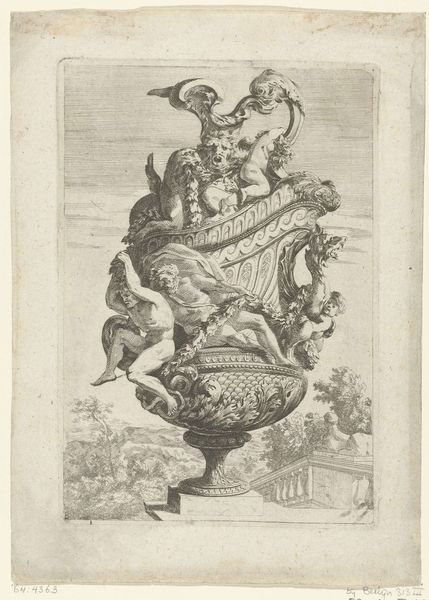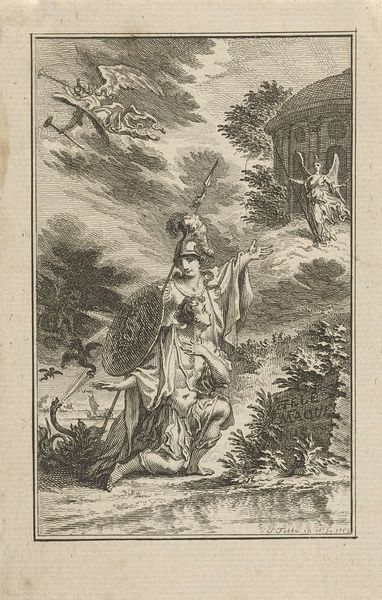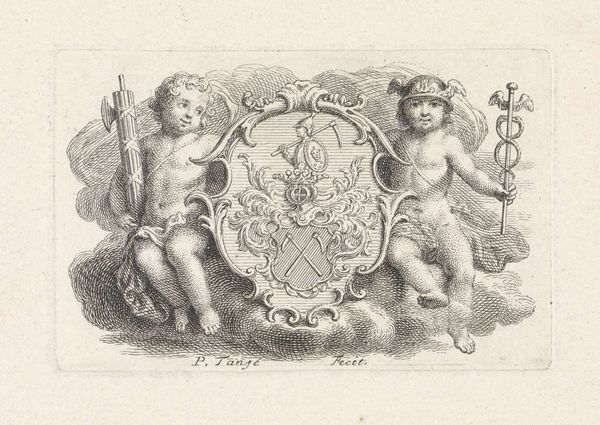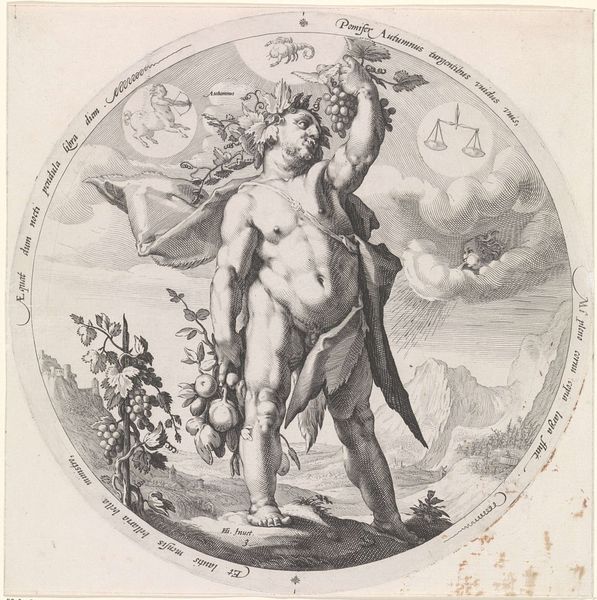
Dimensions: height 69 mm, width 91 mm
Copyright: Rijks Museum: Open Domain
Simon Fokke created this print of the coat of arms of Willem V, Prince of Orange-Nassau, sometime between 1712 and 1784. During this era, the Dutch Republic was navigating complex social hierarchies amidst rising class tensions. Fokke's print presents Willem V, not as a man, but as an idealized cherubic figure, a common artistic choice aimed at legitimizing power through notions of innocence and divine right. The symbolism is overt: the lion, the heraldic shield, and the radiant light all speak to the power and prestige associated with the House of Orange-Nassau. But consider this cherubic figure in light of the economic disparities of the time. How might ordinary Dutch citizens have viewed such representations of power when they themselves faced poverty? This print offers a glimpse into the visual strategies used to uphold authority, inviting us to reflect on the relationship between representation, power, and social inequality in 18th-century Netherlands.
Comments
No comments
Be the first to comment and join the conversation on the ultimate creative platform.


